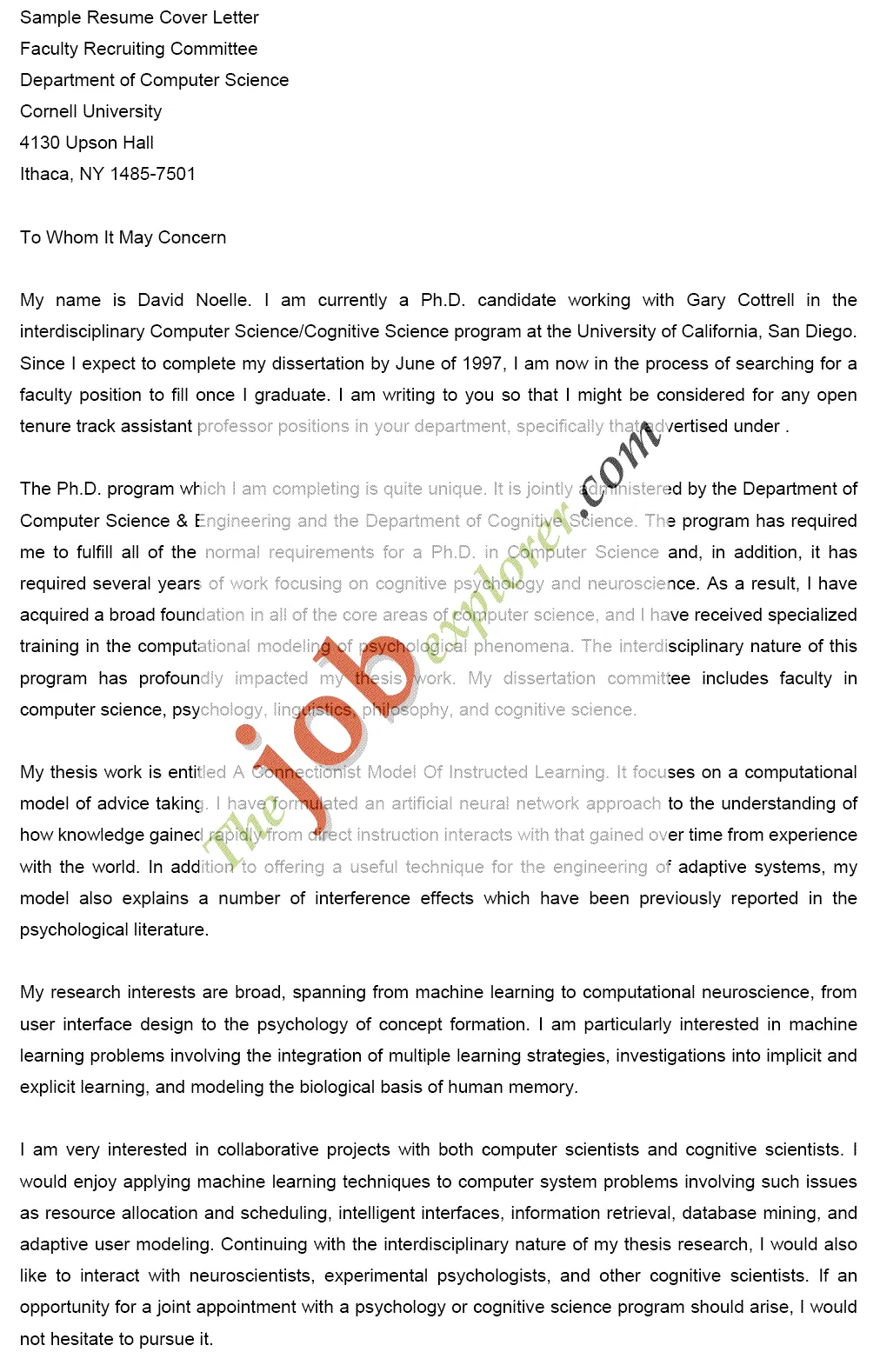Crafting Your Professor Cover Letter
A compelling cover letter is crucial when applying for a professor position. It serves as your first introduction to the search committee, providing an opportunity to showcase your qualifications and express your interest in the role. Unlike a resume or CV, the cover letter allows you to articulate your story, explain your motivations, and demonstrate how your skills and experience align with the specific requirements of the position and the values of the university. This guide will walk you through the essential steps of crafting a cover letter that impresses and helps you stand out from the competition. Remember, the goal is not just to list your accomplishments, but to paint a vivid picture of your potential and how you can contribute to the academic community.
Researching the Department and Professor
Before you even begin writing, thorough research is essential. Visit the university’s website and explore the department’s mission, values, and current research. Identify the professors you might be working with and familiarize yourself with their work. Understanding the department’s focus and the individual faculty members will allow you to tailor your cover letter to their specific needs and interests. Showing that you’ve taken the time to understand the institution demonstrates your genuine interest and commitment, significantly boosting your chances of getting noticed. This preparation allows you to make meaningful connections between your qualifications and the department’s goals, making your application more compelling.
Highlighting Your Qualifications and Skills
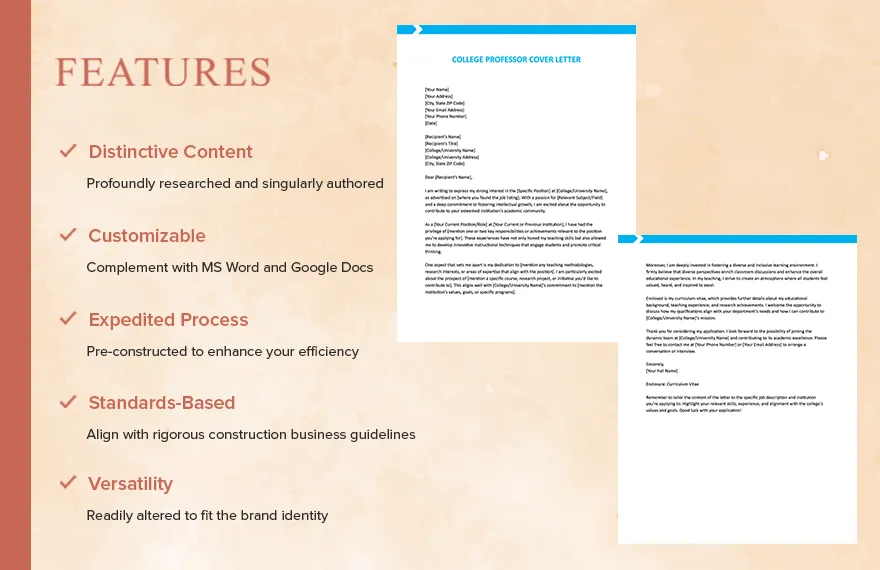
The body of your cover letter should focus on highlighting your key qualifications and skills. Begin by clearly stating the position you are applying for and where you saw the job posting. Then, emphasize your relevant experience, education, and accomplishments. Quantify your achievements whenever possible. For example, instead of saying “Increased student engagement,” state, “Increased student engagement by 20% through innovative teaching methods.” This specificity provides concrete evidence of your capabilities. Make sure to align your skills with the specific requirements outlined in the job description, using keywords to catch the attention of the search committee and Applicant Tracking Systems (ATS).
Demonstrating Alignment with the University’s Values
Universities often have specific values or mission statements. Research these values and incorporate them into your cover letter. For instance, if the university emphasizes diversity and inclusion, discuss your experience in fostering an inclusive learning environment. If the university prioritizes community engagement, describe your involvement in outreach programs or public service. By demonstrating that your values align with those of the institution, you show that you are not just a good candidate but also a good fit for the university’s culture. This alignment can significantly strengthen your application and make you a more attractive candidate.
Showcasing Your Research and Publications
Research is a critical component of most professor positions, so your cover letter should showcase your research experience and publications. Briefly summarize your research interests, methodologies, and findings. Highlight any significant publications, grants, or awards you’ve received. Explain how your research aligns with the department’s research focus and how you can contribute to the scholarly community. Be sure to mention any interdisciplinary work or collaborations you’ve participated in, as these can be highly valued. Consider including a link to your online research profile or a personal website where they can access your publications.
Emphasizing Teaching Experience and Philosophy
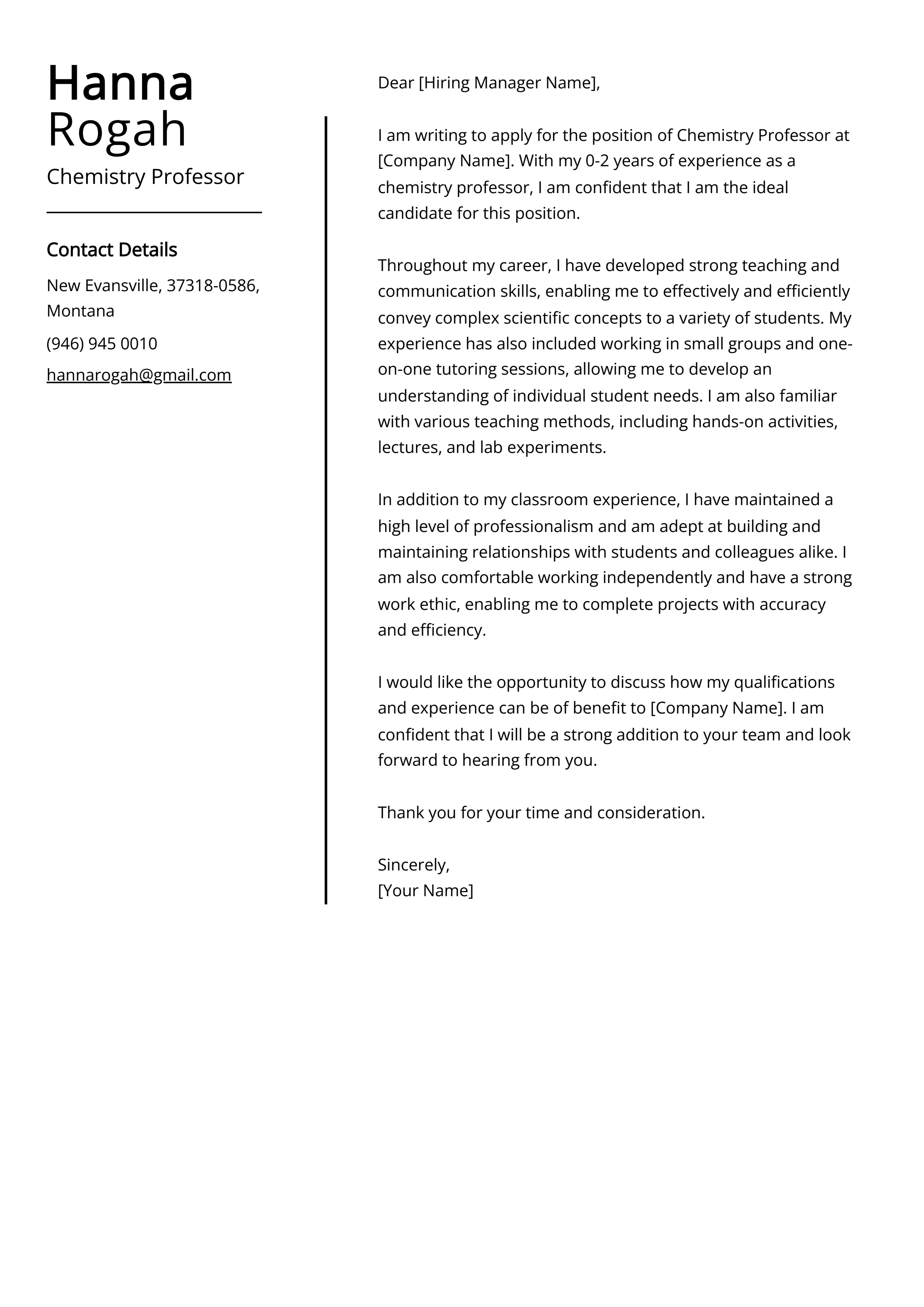
Teaching experience is another crucial aspect of a professor’s role, therefore you need to emphasize it in your cover letter. Describe your teaching experience, including the courses you have taught, the teaching methods you employ, and your philosophy of teaching. Mention any teaching awards or positive student evaluations you have received. If you have mentored students or supervised research projects, be sure to highlight these experiences as well. Your teaching philosophy should articulate your approach to education, your goals for student learning, and your commitment to creating an engaging and supportive learning environment.
Structuring Your Cover Letter for Impact
Opening Paragraph: Grabbing Their Attention
The opening paragraph is your first opportunity to make a strong impression. Start by clearly stating the position you are applying for and how you learned about it. Then, immediately capture their attention by expressing your enthusiasm for the role and the institution. Briefly mention a key achievement or skill that makes you a standout candidate. This opening should be concise, engaging, and set the tone for the rest of your letter. Consider mentioning something specific that attracted you to the role or department to demonstrate your genuine interest.
Middle Paragraphs: Detailing Your Expertise
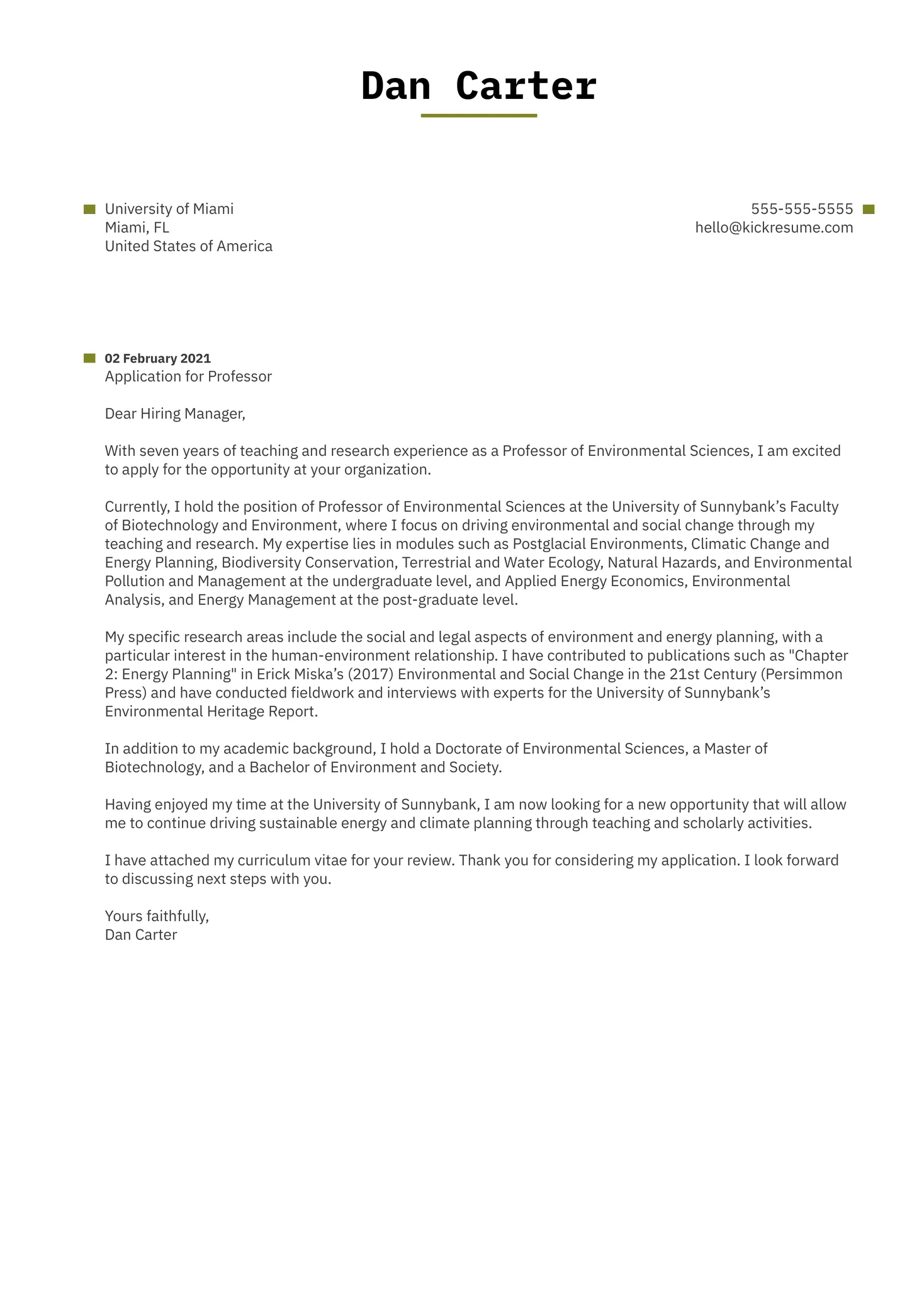
The middle paragraphs should provide a detailed overview of your qualifications, skills, and experiences. Organize these paragraphs logically, addressing the key requirements outlined in the job description. Use specific examples and quantifiable results to support your claims. For example, if the job description emphasizes research, dedicate a paragraph to your research accomplishments. If teaching is a priority, devote a section to your teaching philosophy and experience. Ensure each paragraph focuses on a specific aspect of your expertise, making it easy for the search committee to quickly grasp your key strengths.
Closing Paragraph: Expressing Enthusiasm
Your closing paragraph should reiterate your enthusiasm for the position and the university. Summarize your key qualifications and reiterate your interest in the role. Thank the search committee for their time and consideration, and clearly state your willingness to provide additional information or to participate in an interview. End with a professional closing, such as “Sincerely” or “Respectfully,” followed by your name and contact information. This final paragraph should leave the search committee with a positive and memorable impression of you as a candidate.
Tailoring Your Letter to the Specific Position
One of the biggest mistakes you can make is sending a generic cover letter. Tailor each cover letter to the specific position you’re applying for. Carefully review the job description and identify the key requirements, skills, and qualifications the department is seeking. Then, customize your letter to address these specific requirements. Highlight how your skills and experiences align with their needs. Mentioning the department’s specific research interests and how you plan to contribute will also show your genuine interest and increase your chances of being selected for an interview. Using keywords from the job description ensures your application gets noticed by both human readers and automated screening systems.
Addressing Key Requirements and Keywords
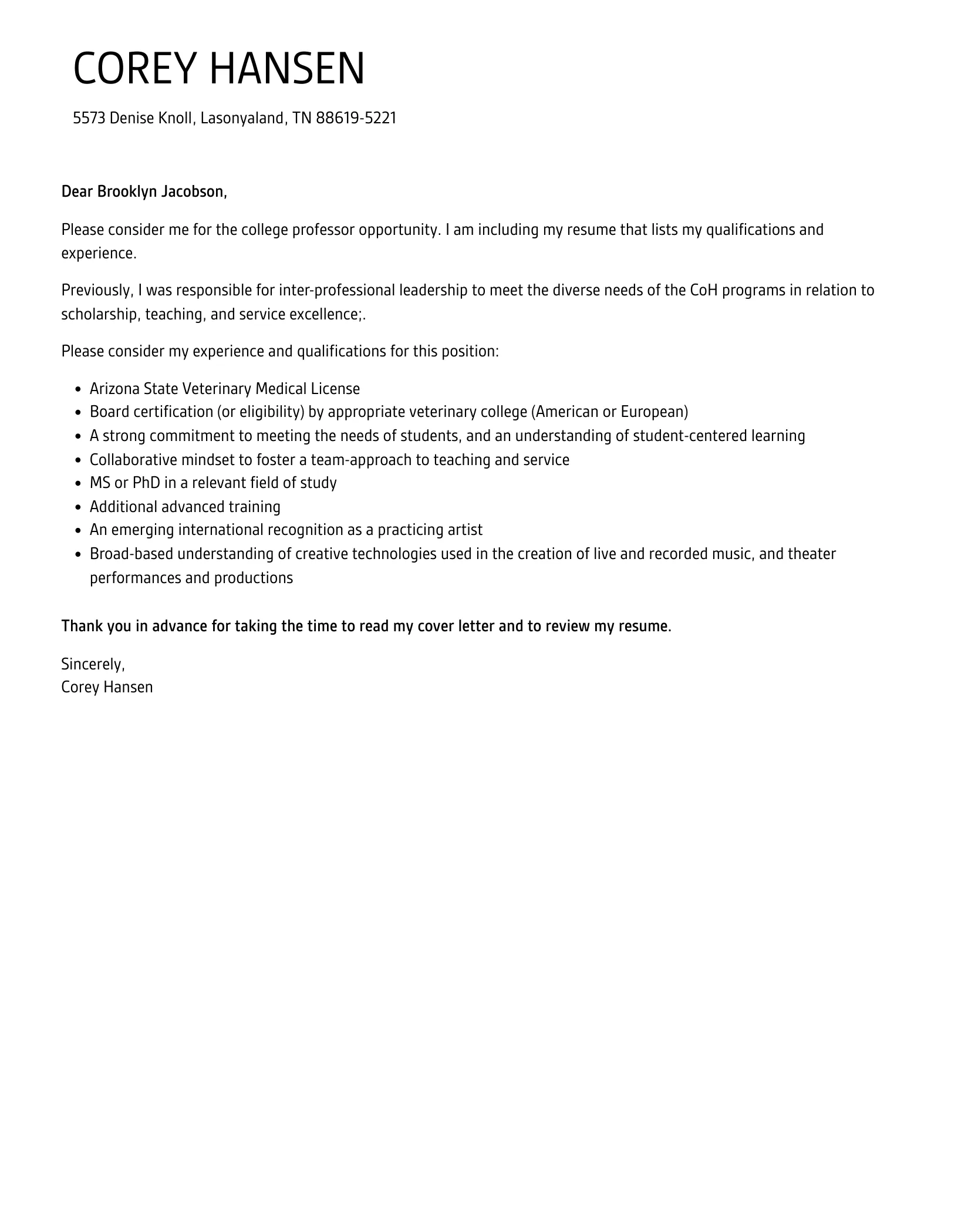
In addition to tailoring your letter, strategically include keywords from the job description. Applicant Tracking Systems (ATS) often scan cover letters and resumes for specific keywords. By including these terms, you increase the likelihood that your application will be selected for review by a human. However, don’t overdo it. Integrate keywords naturally into your writing. Focus on the most important requirements and demonstrate how your qualifications align with those requirements. This balance will ensure that your cover letter is both ATS-friendly and compelling to the search committee.
Proofreading and Editing for Perfection
Before submitting your cover letter, thoroughly proofread and edit it for any errors. Errors in grammar, spelling, or punctuation can create a negative impression and detract from your qualifications. Have a colleague or mentor review your letter as well. A fresh pair of eyes can often catch mistakes you might have missed. Ensure the letter is well-organized, concise, and easy to read. Pay close attention to the tone and style to make sure they are professional and appropriate for an academic setting. A polished and error-free cover letter demonstrates attention to detail and professionalism.
Writing a cover letter for a professor position requires careful planning, thorough research, and attention to detail. By following these guidelines, you can create a cover letter that effectively showcases your qualifications, demonstrates your enthusiasm, and increases your chances of landing an interview and ultimately securing that professor position. Remember to be authentic, highlight your strengths, and demonstrate a genuine interest in the role and the institution. Good luck with your application!
